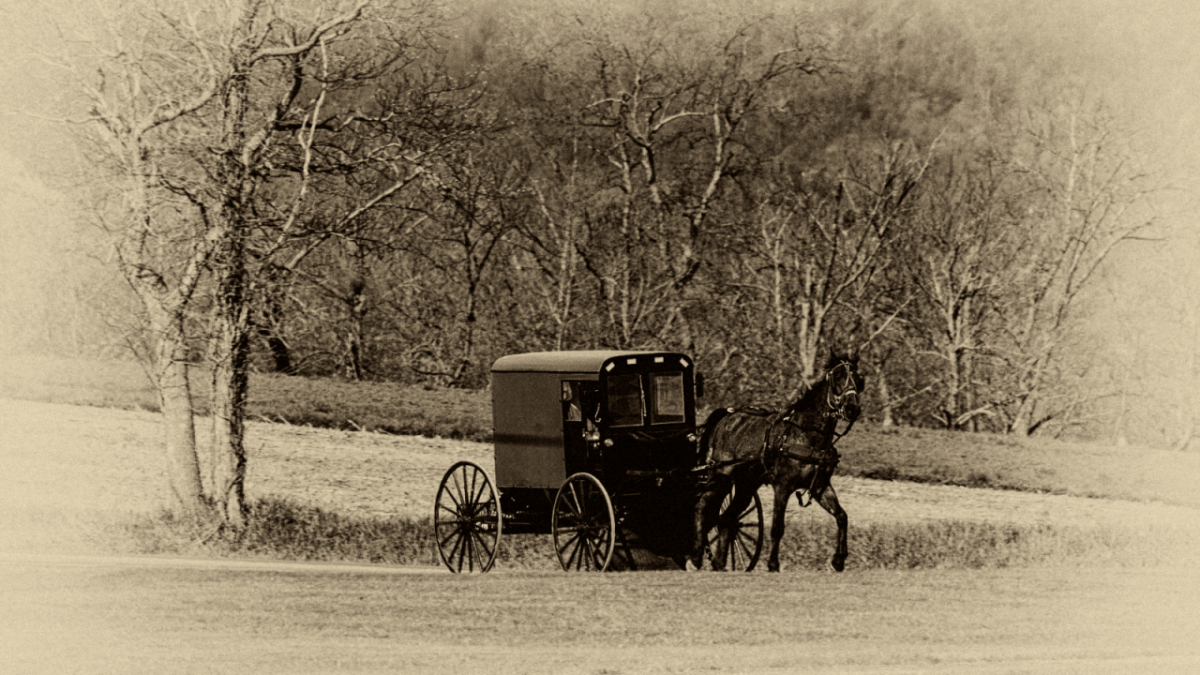Ecocentricity Blog: Stranded on the Side of the Road
By: John A. Lanier

Ecocentricity Blog: Stranded on the Side of the Road
We went old-school for family movie day this past weekend, rolling out the 1955 animated classic Lady and the Tramp. Chantel and I didn’t ever remember seeing it, but our kids like dogs, so we figured it would be a winner (it was). We certainly weren’t expecting to see horses and buggies in the story, though. Last we knew, the internal combustion engine had rendered that particular mode of transit obsolete by the 1950s.
The horses and buggies only played a minor role in the plot, and I feel the story could have been functionally the same had they shown cars instead. Still, we were curious, so a little Wikipedia sleuthing helped us solve the mystery – the story was set back in the year 1910, just before automobiles revolutionized society. That bit of curiosity was enough to get me thinking about those buggies though.
First, why did they call them buggies? Seems like an odd choice of name. Second, I wonder what manufacturers of buggies thought when Henry Ford first introduced the Model T in 1908. I bet most scoffed at his bold ambition to bring an affordable automobile to the masses. But I bet at least a few thought, “Uh oh.” Third, I wonder what people did with those buggies when they replaced them with the family’s first car. I bet more than a few became firewood.
In economic terms, these buggies became stranded assets (or alternatively, non-performing assets). In essence, a stranded asset is one that suffers an unanticipated devaluation because of some external market factor. It doesn’t become valueless because it breaks, but rather because something changes to make it obsolete. Another classic example would be equipment to develop photos from negatives – once digital photography entered the mainstream, there wasn’t much of a business case for darkrooms.
If I had to guess, digitalization has stranded more assets than any other phenomenon in human history. On top of photography, it has also transformed telecommunications, music, film, and other industries. Just ask Blockbuster how it felt to own all of those DVDs they used to rent out when they filed for bankruptcy.
That said, I think a new phenomenon has the potential to be even more disruptive when it comes to stranded assets – the climate crisis. Our warming planet is going to put two simultaneous stressors on various economic sectors and business models. One is the negative impacts that come along with a changing climate. For instance, real estate assets will become completely stranded in cities that routinely flood due to sea level rise. Another example would be infrastructure in places that become uninhabited due to extreme weather events (I worry about communities in California rebuilding after the devastating fires they’ve had).
The second stressor is actually the good news. As humanity more fully understands the urgency of the climate crisis, and as business and governments do more to proactively decarbonize society, entire sectors will be rendered obsolete. The coal industry is an early example, and I am convinced that other fossil fuel industries will eventually follow in its demise. Smart investors are going to want to limit their exposure, especially when the market finally realizes which assets are actually stranded. It’s like a massive game of hot potato. You don’t want to own oil stocks, for instance, when the transportation sector fully embraces electrification - just ask those buggy manufacturers (how’d you like that foreshadowing?). Next week, I dig in deeper on how quickly a transportation revolution could strand trillions of dollars of assets.
This blog is available weekly via email subscription. Click here to subscribe.

